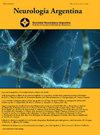与多发性硬化症共存:性功能障碍、生活质量和精神健康之间的关系
Q4 Medicine
引用次数: 0
摘要
多发性硬化症(MS)是一种中枢神经系统的炎症性和神经退行性疾病,主要影响年轻人,是这一群体致残的主要原因。多发性硬化症患者的性功能障碍(SD)比以前认识到的更常见。本研究旨在探讨性功能障碍、抑郁和负面健康感知的患病率,以及它们与扩展残疾状态量表(EDSS)的关系。材料和方法我们在多发性硬化症人群中进行了一项观察性、描述性、横断面研究。数据采用贝克抑郁量表(BDI-2)、简易表格12 (SF-12)和多发性硬化症亲密与性行为问卷19 (MSISQ-19)获得。使用EPI Info 7对参数和非参数数据进行分析。结果共纳入53例患者,随访15个月。EDSS中位评分为1.5分。50.9%的患者表现出某种形式的性功能障碍,37.7%的患者有一定程度的抑郁,26.4%的患者对健康有消极的自我认知。非参数分析显示,性功能障碍患者的EDSS中位评分为2分,无性功能障碍患者的EDSS中位评分为1.5分(p = 0.03)。重度抑郁症患者的EDSS评分为3.25分,无抑郁症患者的EDSS评分为1.5分(p = 0.04);对健康有负面感知者的EDSS评分为2.75分,对健康有积极感知者的EDSS评分为1.5分(p = 0.0003)。参数评价发现,EDSS患者;2型患者性功能障碍患病率为34.6%,抑郁症患病率为31.6%,而EDSS >;2型患者性功能障碍患病率为66.7% (p = 0.001),抑郁症患病率为53.3% (p = 0.08)。EDSS患者<;有性功能障碍者占44.4%,有EDSS >;4者占87.5% (p = 0.01)。EDSS患者<;4例患者表现为抑郁,占30.4%,EDSS患者表现为抑郁,占85.7% (p = 0.004)。EDSS患者<;91.7%的患者认为阳性,85.7%的患者认为阴性(p = 0.0001)。结论MS患者存在较高的性功能障碍和抑郁患病率,即使EDSS值为2或更高,也与残疾增加有关。这表明生活质量差,需要从早期阶段就对MS的身体和情感方面进行综合治疗。本文章由计算机程序翻译,如有差异,请以英文原文为准。
Conviviendo con esclerosis múltiple: relación entre disfunción sexual, calidad de vida y salud mental
Introduction
Multiple sclerosis (MS) is an inflammatory and neurodegenerative disease of the central nervous system that primarily affects young individuals and is the leading cause of disability in this group. Sexual dysfunction (SD) in patients with MS is more common than previously recognized. The present study aimed to determine the prevalence of sexual dysfunction, depression, and negative health perception, as well as their relationships with the Expanded Disability Status Scale (EDSS).
Materials and Methods
We conducted an observational, descriptive, cross-sectional study in our MS population. Data were obtained using the Beck Depression Inventory (BDI-2), Short-form 12 (SF-12), and Multiple Sclerosis Intimacy and Sexuality Questionnaire 19 (MSISQ-19). Parametric and non-parametric data were analyzed using EPI Info 7.
Results
A total of 53 patients were included over a period of 15 months. The median EDSS score was 1.5. Of the patients, 50,9% presented some form of sexual dysfunction, 37,7% had some degree of depression, and 26,4% had a negative self-perception of health. Non-parametric analysis showed that patients with sexual dysfunction had a median EDSS score of 2, while those without dysfunction had a median score of 1.5 (p = 0.03). Patients with severe depression had an EDSS score of 3.25, compared to 1.5 for those without depression (p = 0.04), and those with a negative perception of health had an EDSS score of 2,75, while those with a positive perception had a score of 1.5 (p = 0.0003). Parametric evaluation found that patients with EDSS < 2 had a 34.6% prevalence of sexual dysfunction and a 31.6% prevalence of depression, whereas those with EDSS >2 had an 66.7% prevalence of sexual dysfunction (p = 0.001) and a 53.3% prevalence of depression (p = 0.08). Patients with EDSS < 4 presented sexual dysfunction in 44.4% and with EDSS >4 in 87.5% (p = 0.01). Patients with EDSS < 4 presented depression in 30.4% and patients with EDSS >4 85.7% (p = 0.004). Patients with EDSS < 4 were perceived positively by 91.7% and patients with EDSS >4 by 85.7% negatively (p = 0.0001).
Conclusion
There is a high prevalence of sexual dysfunction and depression in patients with MS, which correlates with increased disability, even from EDSS values of 2 or higher. This suggests poor quality of life and the need for comprehensive treatment addressing both physical and emotional aspects of MS from the early stages.
求助全文
通过发布文献求助,成功后即可免费获取论文全文。
去求助
来源期刊

Neurologia Argentina
Medicine-Neurology (clinical)
CiteScore
0.50
自引率
0.00%
发文量
34
期刊介绍:
Neurología Argentina es la publicación oficial de la Sociedad Neurológica Argentina. Todos los artículos, publicados en español, son sometidos a un proceso de revisión sobre ciego por pares con la finalidad de ofrecer información original, relevante y de alta calidad que abarca todos los aspectos de la Neurología y la Neurociencia.
 求助内容:
求助内容: 应助结果提醒方式:
应助结果提醒方式:


